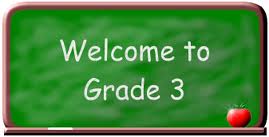Please click on the picture above to access the Touch Math website.
Wednesday, 27 April 2011
Touch Math
Please click on the picture above to access the Touch Math website.
How Can You Make Fractions More Meaningful?
In class we will begin practicing fractions. We will focus on halves, thirds, and fourths. Studying fractions will help your children to understanding equal parts. Practicing fractions at home can be extremely meaningful to your child.
Here are a list of ways you can practice using fractions at home:
1. Break a cookie in HALF. Show that both HALVES are equal parts.
2. Peel an orange and split all the pieces apart. Show that the orange comes in equal parts and then count the parts. Eat one and explain, "I just ate 1/8 of the orange"
3. Cut a cake into 2 or 4 parts. Share the cake with your child and ask them
to give you the same amount so that they can see the equal parts. Then save a piece for me :)
 |
| Click to play game |
4. Order pizza. Show that the pizza is cut into 8 pieces. Each piece should look the same. Ask your child how many people can share this pizza if everyone gets one piece? How many people can share if everyone gets two pieces?
4. Play basketball on your driveway. Make sure you play with 3 people including your child. Get three balls. Everyone needs 1 ball, let your child see that he will get 1/3 of the balls.
5. Play with Play-dough. Take out your favourite colour. Tell your child you want to share the colour. Roll out the play-dough and cut it in half. Now you have 2 pieces, each of you can take 1/2 (one half). Play-dough is great fun and you can even cut it into thirds or fourths.
6. While reading a book that looks long to your child, show them, "we'll read 1/3 of the book tonight, 1/3 tomorrow night, and 1/3 the next night." Visually show the parts of the book that you will read.
7. If you are working on telling time, break the clock into four parts. Show that 1/4 of the clock is the same as 15 minutes.
8. If you are working on counting quarters, show that 1/4 of a dollar is the same as .25 cents.
Perimeter
Today in math we learned how to find the perimeter of polygons!
Perimeter is a measurement of the distance around the outside of an object. To calculate perimeter of a polygon you must find the sum of the lengths of its sides.
Ex. This polygon has 6 sides therefore:
= 4cm + 3cm + 3cm + 4cm + 3cm + 3cm
Click on the butterflies to practice some perimeter questions.
Tuesday, 26 April 2011
Nature Month - Toronto Botanical Gardens
Plants provide oxygen and food that other living things need to survive. As you can see from our caterpillar, Leo, he wouldn't be able to survive without plants. What ways can humans protect plants?
The Royal Ontario Museum (ROM) and the Toronto Botanical Garden (TBG) have joined together to educate all of us on how to make nature survive and thrive for the month of April. As we have learned during Earth week and during our Science class our ecosystems are in crisis, but we can help with one garden at a time.
Today in class we will be taking a virtual tour of the Toronto Botanical Gardens. I know we would all love to go visit but we are lucky enough to get to experience it together in the comfort of our classroom.
The Royal Ontario Museum (ROM) and the Toronto Botanical Garden (TBG) have joined together to educate all of us on how to make nature survive and thrive for the month of April. As we have learned during Earth week and during our Science class our ecosystems are in crisis, but we can help with one garden at a time.
Today in class we will be taking a virtual tour of the Toronto Botanical Gardens. I know we would all love to go visit but we are lucky enough to get to experience it together in the comfort of our classroom.
Monday, 25 April 2011
Butterfly Life Cycle
Larva - The egg hatches and the larva (caterpillar) comes out
Pupa - the caterpillar forms a cocoon
Recycle Reduce and Reuse
Over the past couple of weeks we have been discussing ways we can change our world for the better.
Remember - Trash isn't always garbage, so know where to recycle, reduce and reuse. Click on this link to play a game to help remind you of what should or shouldn't be thrown out.
I am so proud of the class for participating in Earth Hour. We as a class did not turn on our lights for the whole week and made sure to conserve energy. You all can look through the National Wildlife Federation website to see how important it is to not only keep our earth clean for us but for our animals as well.
I hope everyone is excited to get started on our butterfly experiment. As promised we will find a caterpillar outside and hopefully watch it transform into a beautiful butterfly while we are working away on our plant unit.
See you all tomorrow :)
Thursday, 14 April 2011
Welcome to my wiki! I hope this wiki will be helpful to my students and their families this year.
I am looking forward to getting to know each and everyone of you. Through this wiki I will give classroom updates, inform families of homework assigned and provide useful links for my students to explore. This year is going to be an exciting and fun adventure for all of us!
Subscribe to:
Comments (Atom)












